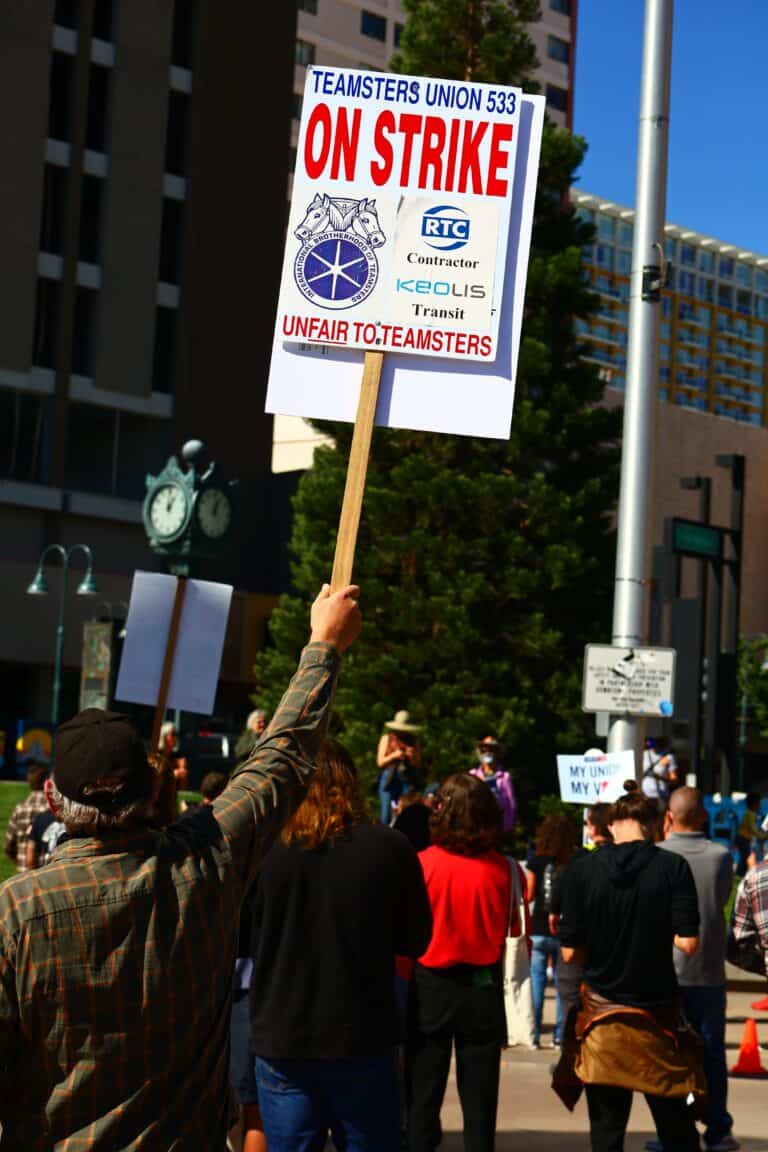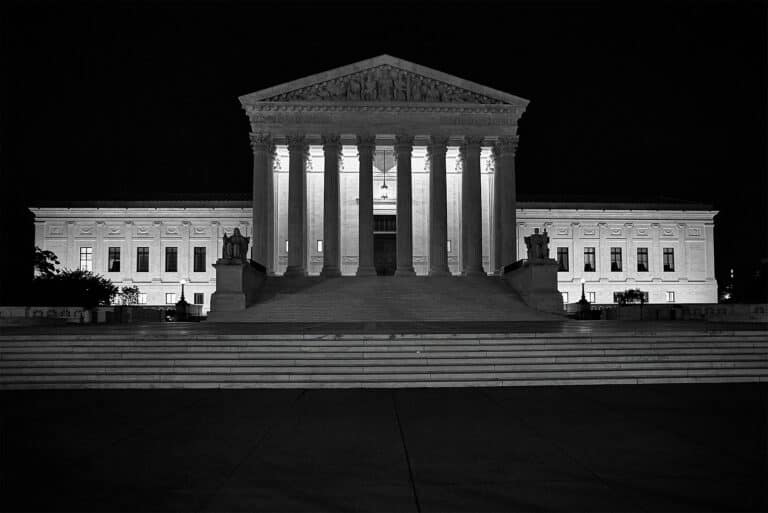Sophia Z. Lee, University of Pennsylvania Law School
Janus v. AFSCME will soon decide the constitutional fate of fair-share fees for public sector unions. These fees support unions’ collective bargaining work on behalf of employees they are legally required to represent but who are not union members. Most prognosticators expect the Supreme Court to hand the National Right to Work Legal Defense Foundation (NRTWLDF) a win on its claim that such fees violate the First Amendment rights of non-union workers. Yet, as I develop further below, the history that led to Janus offers three thin rays of hope to the labor movement.
First, history highlights the role principled conservative justices have played in thwarting right-to-work advocates’ prior attacks on union fees, pointing the way to a possible victory for unions in Janus. In 1977, the Court decided Abood v. Detroit Board of Education, the decision that found fair-share fee agreements for public-sector unions constitutional and which the Janus petitioners seek to overturn. At the time, the idea that public-sector workers had any First Amendment protections on the job was new and contested. Only in 1968 did the Court in Pickering v. Board of Education clearly establish that the First Amendment protected government employees. To the conservative justices Nixon appointed soon after, Pickering was a dangerous precedent. Over the next years, they joined majorities dismissing government workers’ First Amendment claims and dissented from decisions granting them.
When NRTWLDF argued in Abood that all the fees unions charged non-members were unconstitutional compelled speech, only Justice Rehnquist was consistent. Rehnquist, in contrast to his fellow Nixon appointees, joined the majority in full. As he explained, he was “unable to see a constitutional distinction between [the] governmentally imposed requirement” in Abood and the party-affiliation job requirement in Elrod v. Burns that he and his fellow Nixon appointees had recently argued in dissent passed First Amendment muster.
Twelve years later in Communications Workers of America v. Beck, NRTWLDF tried to convince the Supreme Court to apply Abood to private-sector unions under the First Amendment or federal labor law. President Reagan’s Solicitor General, Charles Fried, despite intense pressure from within and outside the administration, rejected the NRTWLDF’s claims in full. So did the Reagan-appointed Justices Antonin Scalia and Sandra Day O’Connor, as well as Nixon appointee Justice Harry Blackmun. (The rest of the Court crafted a statutory analogue to Abood.) Conservatives had once again put constitutional principle ahead of any sympathy for right-to-work claims.
Will NRTWLDF confront any principled conservatives this time around? There is good reason to be skeptical. All the Court’s conservative justices save Justice Gorsuch have authored or joined opinions that indicate a cautiousness about government workers’ First Amendment rights. However, they also all voted to overturn Abood when an equally divided Court left it intact in Friedrichs v. California Teachers Association, the last constitutional challenge to public-sector fair-share fees. Nonetheless, the best chance for preserving public-sector fair-share fees may lie with convincing at least one of those justices to follow their predecessors and be cautious about right-to-work litigants’ First Amendment claims just as they are about those made by other government workers.
Second, even if NRTWLDF wins before the Court, the history of right-to-work litigation highlights that the very compromise such an outcome will require of conservative justices may offer a silver lining for unions and workers. Just as NRTWLDF saw great opportunity in Pickering, its win in Janus could create opportunities for public-sector workers and their unions. One way conservative justices have limited Pickering is to narrowly define the speech “upon matters of public concern” that Pickering protects. In a recent right-to-work case, Harris v. Quinn, Justice Alito, writing for a five-justice majority, reasoned in dicta that fair-share fees implicated protected matters of public concern. Even if the Court holds Pickering inapplicable to fair-share fees, it will likely find that everything public sector unions do involves political speech.
Either outcome could open the door to future Pickering protection of speech about the terms and conditions of work, as well as the expression of other political opinions. Indeed, Reagan’s former Solicitor General Fried co-authored an amicus brief in Janus warning the Court against adopting NRTWLDF’s argument that all union speech is political speech. Such a holding, he and his co-author, Robert Post, caution, would disrupt the framework built since Pickering to limit the scope of those rights, “set[ting] in motion drastic changes in First Amendment doctrine that essentially threaten to constitutionalize every workplace dispute.” This could be good news for unions and workers, as legal scholars such as James Pope and labor advocates such as Shuan Richman have argued.
Third, should an NRTWLDF victory not provide the quick path to Pickering protections Fried and Post predict, the history that led to Janus is a testament to advocates’ ability to dramatically alter constitutional law, offering promise that right-to-work advocates’ victory today can be bent to benefit workers’ collective voice in the workplace tomorrow. The first constitutional challenge to union fees was brought seventy years ago by Cecil B. DeMille, a famous movie mogul and radio host. The California Supreme Court easily dismissed his case in DeMille v. American Federation of Radio Artists, finding that the fee his union levied to oppose a state right-to-work law did not compel or express DeMille’s speech.
In response, DeMille and other right-to-work proponents embarked on a decades-long campaign to change how courts viewed the constitutionality of union fees. Critically, they engaged not only in coordinated litigation, but also political education and popular mobilization. They described the right to work as a civil right, harnessing that term’s cachet. They also advised that the industrialists and wealthy individuals backing their efforts and “calling the shots” should be hidden behind a public face of “housewives, farmers, small businessmen, professional people, and wage earners.”
Thanks in part to their popular constitutionalist campaign, right-to-work advocates made steady headway in the courts. In the 1950s, they brought numerous suits asserting that all union fees were unconstitutional. While they lost that claim, they got the Supreme Court to state for the first time that union fees for political expenditures raised First Amendment concerns. In the 1960s, NRTWLDF helped generate the case that became Abood. NRTWLDF again failed to establish the unconstitutionality of all union fees but it finally secured the narrower constitutional claim DeMille had made in his unsuccessful suit. Now, NRTWLDF is poised to win the claim right-to-work proponents first made sixty years ago: that all union fees, even fair-share fees, are unconstitutional.
Constitutional claims in general, and First Amendment claims in particular, have long been off limits for unions because of the right-to-work threat. Resolving that threat against the unions in Janus will open the door for them to reclaim the freedoms of association and speech that once buoyed the labor movement. Outside the courts, those claims may prove a potent tool for organizing as well as for making the case for worker organization and concerted action to the public. As the history that led to Janus demonstrates, integrating public education, popular mobilization, and legislative campaigning with litigation can fundamentally change constitutional law within the courts as well.










Daily News & Commentary
Start your day with our roundup of the latest labor developments. See all
July 15
The Department of Labor announces new guidance around Occupational Safety and Health Administration penalty and debt collection procedures; a Cornell University graduate student challenges graduate student employee-status under the National Labor Relations Act; the Supreme Court clears the way for the Trump administration to move forward with a significant staff reduction at the Department of Education.
July 14
More circuits weigh in on two-step certification; Uber challengers Seattle deactivation ordinance.
July 13
APWU and USPS ratify a new contract, ICE barred from racial profiling in Los Angeles, and the fight continues over the dismantling of NIOSH
July 11
Regional director orders election without Board quorum; 9th Circuit pauses injunction on Executive Order; Driverless car legislation in Massachusetts
July 10
Wisconsin Supreme Court holds UW Health nurses are not covered by Wisconsin’s Labor Peace Act; a district judge denies the request to stay an injunction pending appeal; the NFLPA appeals an arbitration decision.
July 9
the Supreme Court allows Trump to proceed with mass firings; Secretary of Agriculture suggests Medicaid recipients replace deported migrant farmworkers; DHS ends TPS for Nicaragua and Honduras